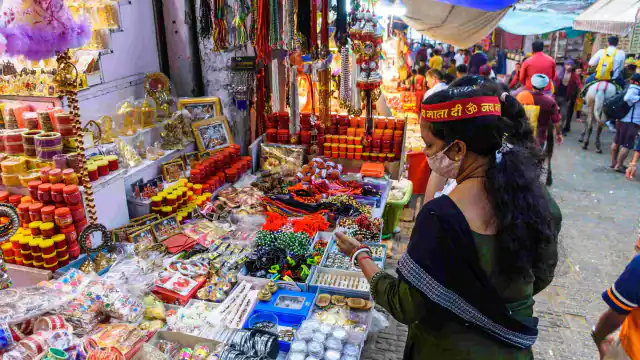A vibrant debate has emerged on social media regarding the contribution of Hindu temples to India’s economy. This discussion comes at a time when significant developments are unfolding, including petitions in the Supreme Court challenging state control over Hindu temples under the Endowments Department, and the Narendra Modi government’s push for a Uniform Civil Code (UCC) to unify personal laws across all religions. These issues have brought the relationship between religion, governance, and economy into sharp focus.
India’s Hindu majority, comprising nearly 80% of the nation’s 1.4 billion population, has historically exhibited remarkable tolerance. Despite this, successive governments, particularly those led by the Congress Party, have been accused of pursuing policies that favour certain minority groups. One notable instance is former Prime Minister Manmohan Singh’s statement asserting that Muslims have the “first claim” on India’s resources, a declaration that many found divisive and unwarranted. During his tenure, properties were reportedly transferred to the Wakf Board, a move criticized as preferential treatment. Similarly, the Aam Aadmi Party in Delhi has faced backlash for providing monthly salaries to Imams and Maulvis, while failing to honour these commitments consistently.
Amid such controversies, data from the National Sample Survey (NSS) Office highlights the economic significance of temples in India. Temples contribute approximately 2.32% to the country’s GDP. With around 1.8 million temples nationwide, including prominent sites like 33,000 special temples, 52 Shaktipeeths, and 12 Jyotirlingas, the temple economy generates substantial revenue. Hindus reportedly spend Rs 4.74 lakh crore annually on religious pilgrimages, supporting the livelihoods of nearly 8 crore people. These pilgrimages create diverse employment opportunities, ranging from transportation and hospitality to the sale of religious items.

Interestingly, a significant portion of the economic benefits from major Hindu pilgrimages, such as Amarnath and Vaishno Devi, accrues to Muslims, who constitute 90% of the workforce in these areas. Similarly, 60% of the earnings from the Somnath temple are attributed to Muslim-run businesses. These statistics underscore the inclusive and interconnected nature of India’s religious economy.
Temples also play a crucial role in local livelihoods. Millions earn a living through activities related to temple services, such as selling flowers, lamps, perfumes, and other religious paraphernalia. Even small temples employ numerous individuals. For instance, workers at the Kashi Vishwanath temple and similar sites earn Rs 300 to Rs 1,000 daily, depending on their roles. This microeconomic ecosystem sustains countless families.
In contrast, mosques, of which there are approximately 3.5 lakh across India, generally do not generate comparable economic activity. Instead, governments in several states pay salaries to Imams and Maulvis, often funded by taxes collected from temples. This has raised questions about the fairness of such practices, particularly given the secular framework of the Indian Constitution.
Some critics question the utility of temple-building, arguing that resources could be better utilized elsewhere. However, proponents emphasize that temples serve not only as spiritual centers but also as hubs of economic activity and cultural preservation. The unique case of the Tirumala Tirupati temple demonstrates how regulations can protect local economic interests by restricting non-Hindu businesses in the vicinity, ensuring benefits flow to the Hindu community.
The debate also extends to government control over religious institutions. Many advocates for the release of temples from state administration, arguing that the funds and revenues they generate could be better managed by autonomous bodies. Conversely, skeptics argue that mosques should be brought under similar governance if equity is to be ensured. However, the counterpoint often raised is that mosques do not generate comparable income, making them less viable for state control.
Thus far, the temple economy is a vital contributor to India’s GDP and an essential source of livelihood for millions. The broader discourse on government control of religious institutions, economic equity, and secularism calls for introspection. It remains imperative for policymakers to address these issues with fairness and sensitivity, ensuring that the economic and cultural heritage of all communities is respected and preserved.







